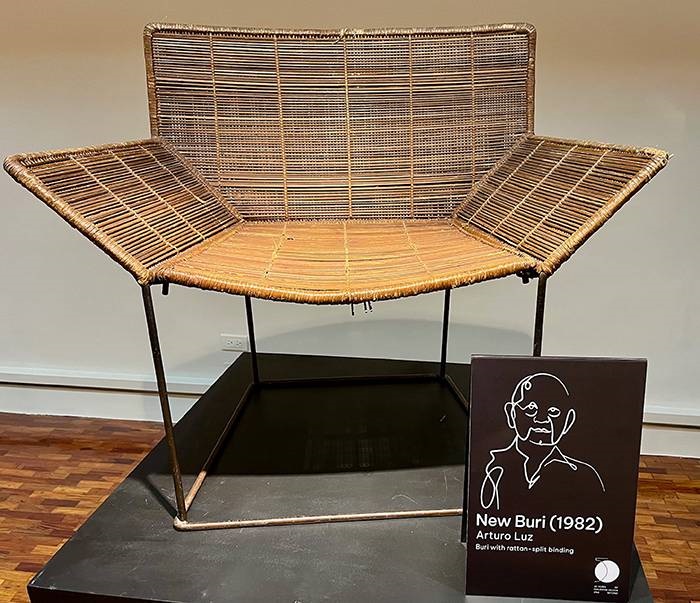Images courtesy of R.C. Ladrido and BluPrint
Celebrating Philippine design, 50 Years of Philippine Design and Beyond presents the evolution of Filipino design over five decades (1970-2023) at the National Museum of Fine Arts until March 3, 2024.
Encompassing fashion, furniture, interior, gifts and houseware, graphics, architecture, film and theater production —the exhibit provides a visual timeline of Filipino design, inspiring pride in our design heritage, material, and craftmanship.
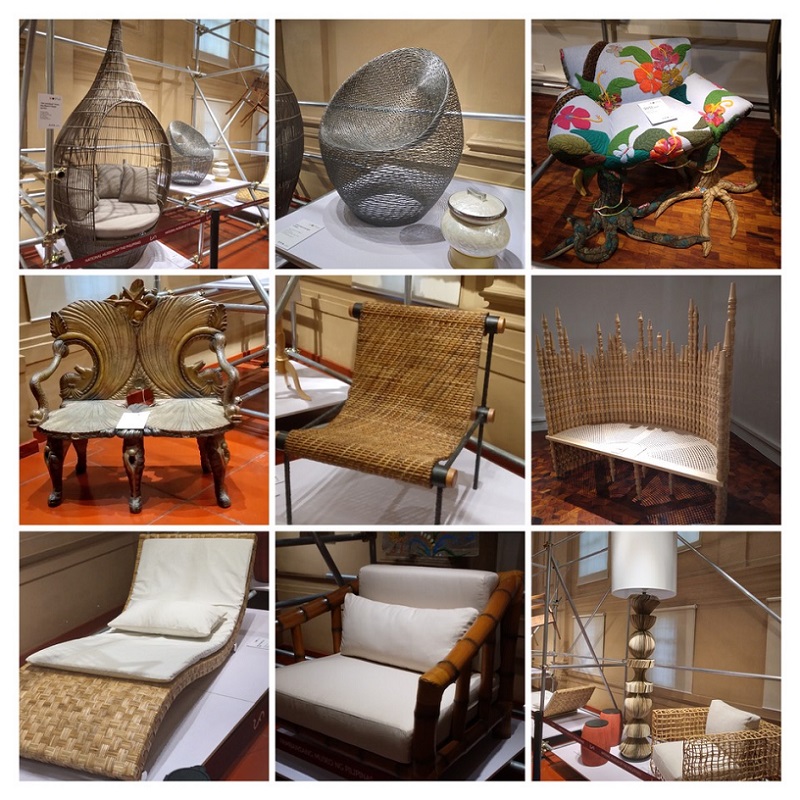
Chairs, chairs, and more chairs are everywhere, including those designed by Lor Calma, Budji Layug, Ann T. Pamintuan, and Kenneth Cobonpue. Other pieces include a purple silk taffeta pouf by Slim’s, the 2015 blue gown worn by Pia Wurzbach as the new Miss Universe, posters by Ray Albano, Narda’s ikat dyed textiles, barong tagalog, handmade paper, and book cover designs of the 1970s and 1980s.
A homage to Arturo Luz, the last part of the exhibit features 50 chairs by various designers, their own interpretation of Luz’s 1982 “Buri Chair.”
Curated by Marian Pastor Roces, the 200 selected objects are arranged by year, and borrowed from designers, private collectors, and the collection of the Design Center of the Philippines.
Luminaries of design
Featured designers who made a significant mark in Philippine design include:
Salvacion Lim Higgins (1920-1990): known as Slim’s, she modernized the look of the Philippine terno, giving it a timeless appeal and elegance. She was an educator and founder of the Slim’s Fashion and Art School, the country’s first fashion and design school which celebrated its 60th anniversary in 2020. She was conferred National Artist for Fashion Design in 2022.
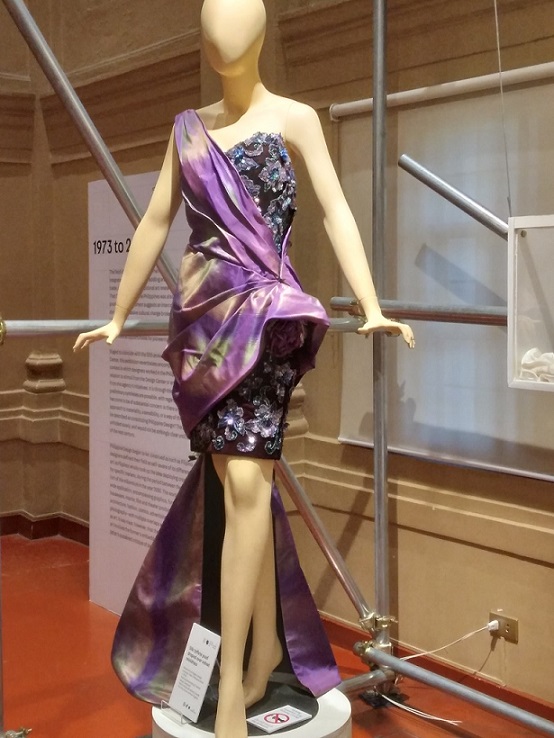
Arturo Luz (1926-2021): A painter, printmaker, sculptor, and designer known for his abstract paintings and wood and metal sculptures, he was a founding director of the Metropolitan Museum of Manila in 1976 to 1986 and also appointed as the head of the Design Center of the Philippines. In 1997, he was conferred National Artist for Visual Arts.
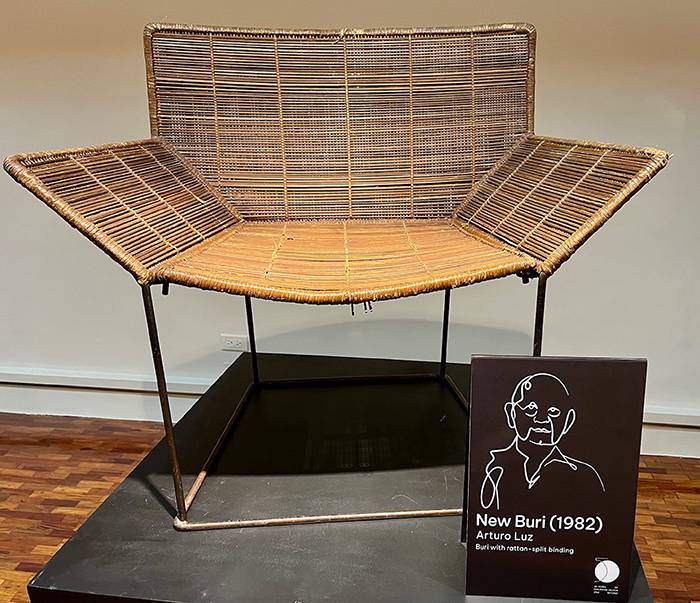
Francisco “Bobby” Mañosa (1931-2019): A renowned champion of Filipino architecture in his 60 years of architectural practice, he created “original Filipino forms, spaces with intricate and refined details” in his myriad reinterpretation of the bahay kubo and bahay na bato. He was conferred National Artist for Architecture and Allied Arts in 2018.
Among his major works: Sulo Hotel, Quezon City; San Miguel Building, Ortigas Center, Pasig City; Metrorail Transport System Stations for LRT 1; Our Lady of Peace Shrine, EDSA, Quezon City; Tahanang Pilipino (Coconut Palace), CCP Complex, Pasay; and Amanpulo Resort, Palawan.
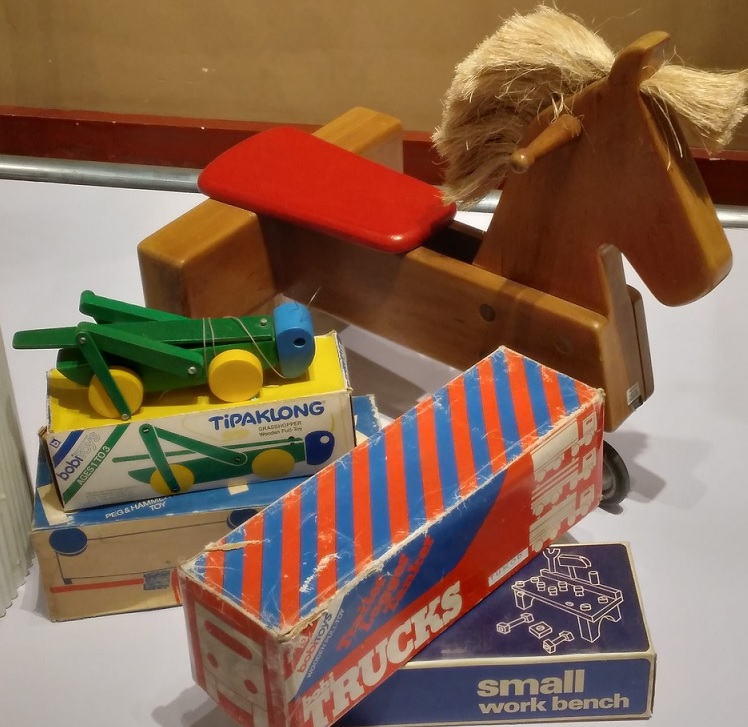
Narda Capuyan (d.2016): A family planning nurse, she introduced hand-knitting to women in Bontoc, Mountain Province to discourage them from making more babies. Using recycled yarns, Narda and her team started weaving blankets and bedcovers in ikat design. It was Narda’s mother who taught her the traditional art of hand-tying and dyeing threads, and weaving them into patterns called ikat. One of her first breaks came in 1974 when Hyatt Terraces Baguio used her fabrics as hotel upholstery, curtains, bedcovers, and furnishings. In 1982, Bloomingale Department Store in New York featured Narda’s products in a Philippine exhibition. It all sold out.
Revitalizing the Cordillera weaving tradition, she received the 1982 Golden Shell Award for excellence in exports and for reviving ikat. In 1989, she received the Countryside Investor Award, and the Agora Awards from the Philippine Marketing Association for her outstanding achievement in export marketing.
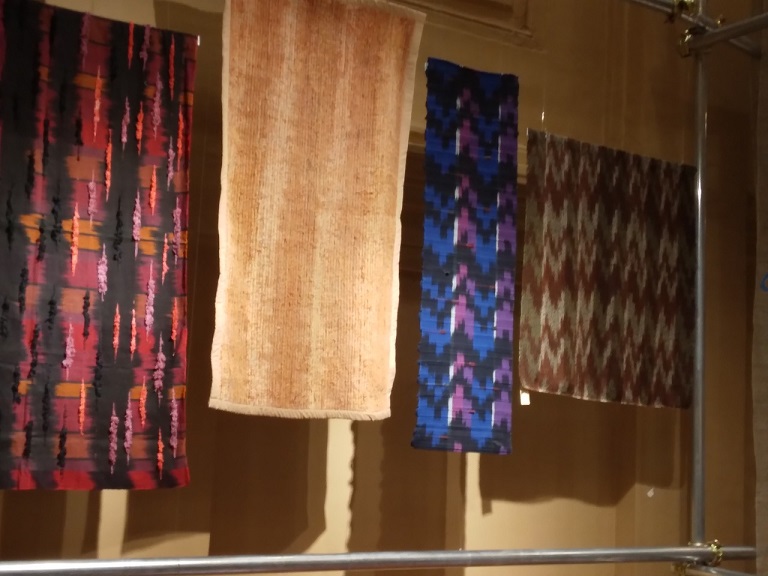
Raymundo Albano (1947-1985): A writer, curator, artist, he was a museum director of the Cultural Center of the Philippines where he worked from 1970 to 1981. In CCP, he institutionalized “its program of abstraction, experimental performances, installations, new media of young Filipino artists.” He also designed and produced CCP’s exhibition catalogues, posters, and magazines.
Kenneth Cobonpue (b. 1968): a multi-awarded industrial designer and manufacturer from Cebu, he has a degree in industrial design (1991) from the Pratt Institute New York. In 1998, he started his own business known for artistic and handmade design that integrated traditional crafts and technology. He established the industrial design program of the University of the Philippines Cebu in 2005.
Among his numerous awards: the first Maison et Objet Designer of the Year in Asia, 2014; Gawad sa Sining Award, Cultural Center of the Philippines, 2020; and Pratt Legends Award of 2023, Pratt Institute New York.
Indigenous and sustainable
A leitmotif in the exhibition is the use of indigenous and sustainable materials, mostly plants (bamboo, buri, abaca, rattan, coconut, capiz, nito, piña, cotton)—all pressing concerns amidst environmental destruction and extreme climate change that have affected numerous countries today, including the Philippines.
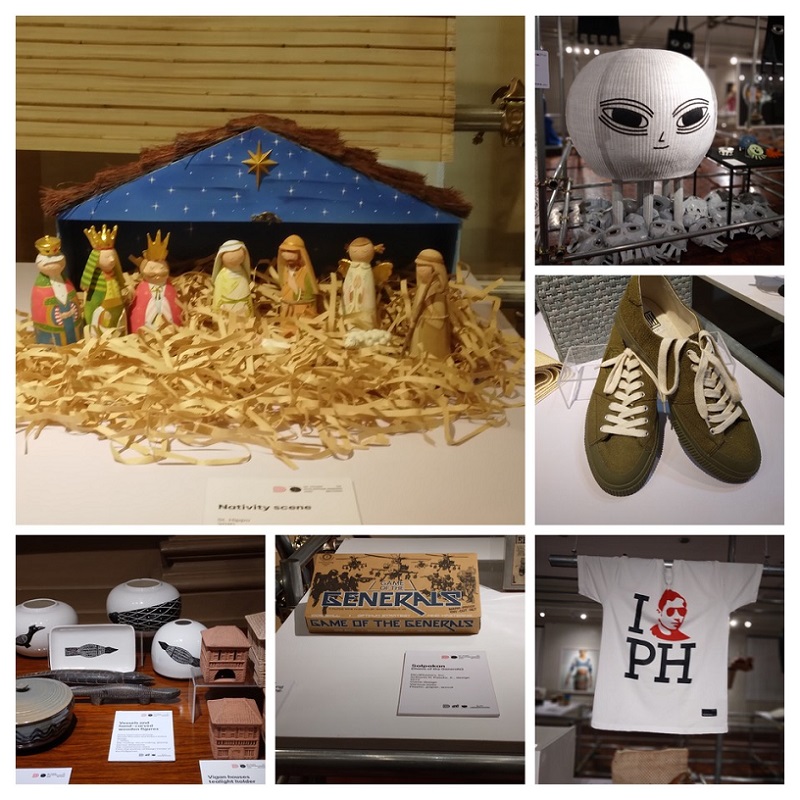
Ma-arte tayo!
Marian Pastor Roces has noted that it takes a village to bring forth Philippine design. Behind every designer is a community, a collective effort that deals with sourcing raw materials, providing labor, and drawing from a deep well of craftmanship to create that single object of design.
In the end, it is the artistic DNA running through traditional artisans from Abra to Zamboanga — the nameless weavers, embroiderers, sewers, gold- and silversmiths, potters, woodcarvers, metalworkers, carpenters — who remain the life and energy of Philippine design.
